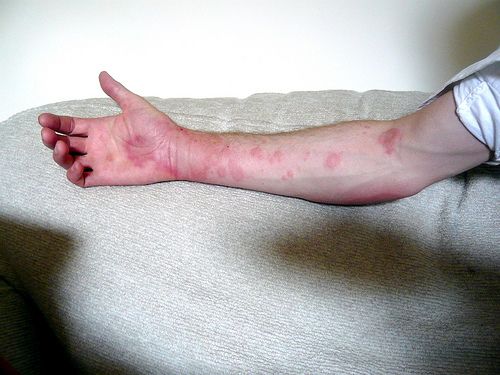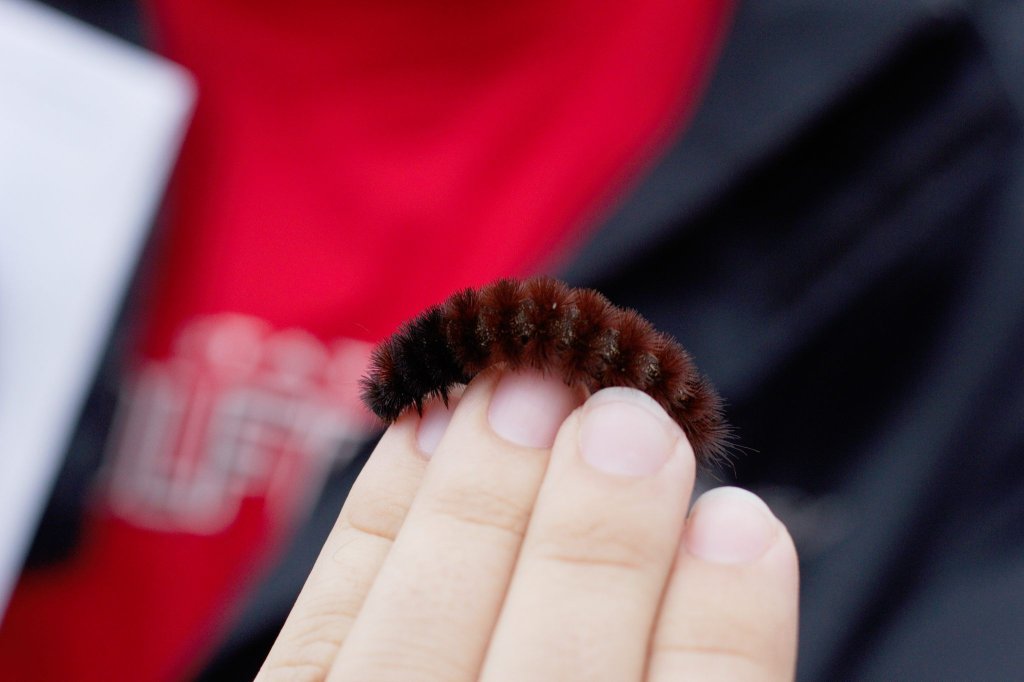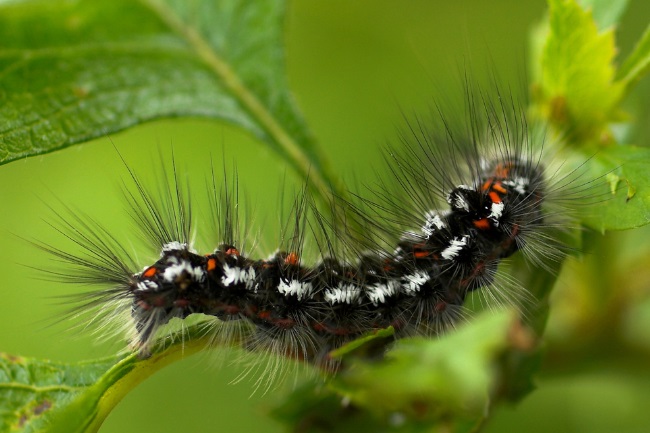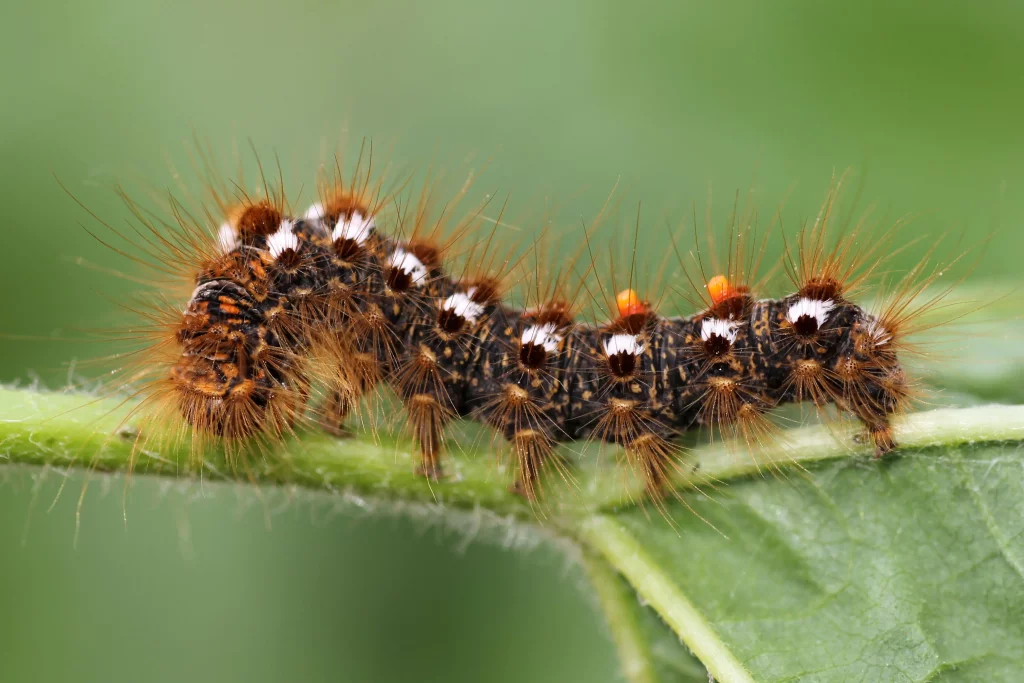Are caterpillars safe to touch using your bare hands? It is a straightforward “NO”. Although caterpillars are relatively harmless, their hairs may sting when you touch them with your bare hands.
This is mainly because the hairs of the caterpillars comprise allergens or toxins that can cause rashes and immediate skin injuries when you come into contact with them with your bare hands.
You may have to wear a safe pair of gloves when you come into contact with caterpillars.
Let us discover what can happen when you touch a caterpillar with your hands. Helping you get started with the same:
1. Discovering a Nasty Itch

It is quite natural to discover caterpillars covered with a thick bunch of hair covering their slender bodies. As a matter of fact, the intimidating hair of the caterpillar is what adds to its defense mechanism.
The hairs can increase the caterpillar’s overall size, thereby increasing their overall weight. That is the primary reason as to why most caterpillars look potentially dangerous to handle.
These species cannot eat too many leaves simultaneously because of their thicker fuzz. The caterpillars are also at risk of being eaten up by their predators, namely the wasps or parasites.
These insects lay their eggs inside the bodies of caterpillars and then eat them inside out. It is the thick layer of hair on caterpillars that makes it difficult for wasps or parasites to eat them so easily.
Other species with stinging or venomous hairs are Puss Caterpillar, Saddleback Caterpillar, Hickory Tussock Moth, and Lonomia Caterpillar.
2. Exploring a Sting that Can Be Nasty on You

Caterpillars have their hollow spines that are capable of administering harmful toxins. These toxins can cause skin infections when exposed to a bare touch. Their bodies produce these toxins to protect them from their predator insects. However, the toxins cannot differentiate between a harmless touch and that of a snapping beak.
Say, for instance, you have the gum leaf skeletonizer with a molted set of heads in the form of a hat. When you touch the species with bare or open hands, you may experience a nasty sting indeed. You would get severe rashes when you come into contact with this type of caterpillar species.
The slug moth caterpillars are also known for stinging hands when touched upon. Similarly, the Southern Flannel North lets out a sting as severe as blunt force trauma.
3. Types of Caterpillars that Can Cause a Deadly Sting

In our guide to identifying caterpillars, it’s noted that very few types can be lethal or fatal indeed. For instance, the Lonomia species produce concentrated toxins causing internal bleeding and even kidney failure among humans, highlighting the importance of accurate identification.
The Giant Silkworm Larvae in South America is one of the most famous proto-types that give fatal stings to humans upon bare-handed contact with the same. The species administers its venom through its sharp spines. The caterpillars do not go out of their way to bleed humans. The damage is done when you accidentally lean on these insects while they do their business.
Risks You Can Encounter While You Try Touching Caterpillars
Having seen the potential types of stings or itches the caterpillars can provide you with, let us discuss the potential risk factors you can encounter while you actually get in contact with them in your gardens. Helping you get started with the same:
1. Skin Itching
When you administer the least dangerous caterpillars, you can still develop itching or get insect-related swelling when you come into contact with the hairs of some of these caterpillars. You can contact a skin dermatologist and apply an ointment or a soothing essential oil so that your skin eventually heals with the skin rashes or allergens the caterpillar bites have caused to you.
2. Skin Irritation
Some types of caterpillars cause bouts of skin irritation when you come in contact with them. Therefore, it is better to wear a high-graded variety of gloves when you deal with caterpillars emitting their larvae. You can choose a durable variety of gloves to protect yourself from getting skin allergies.
3. Stings from Venomous Caterpillars
The stings from venomous varieties of caterpillars can be even more severe and dangerous for you as such. The stings can cause pain, injury, or other forms of trauma for human beings.
As such, you may be immediately rushed to the hospital as the venomous stings from caterpillars call for a medical emergency. As the sting can be lethal and fatal, the patients to whom the sting has been administered have to be rushed to the health care facility immediately.
Conclusion
We have seen the pertinent types of consequences as to what would happen if you were to touch a caterpillar with bare, open hands. The cause-and-effect analysis of what you can encounter has also been discussed with you through easy-to-remember pointers.
The risks or the health hazards caterpillars carry to human beings vary from one type of species to another. This is because their sting or irritation contains different types of bacteria or pathogens that can impact your skin or body on the whole.
Apart from stings and skin irritation, various moths or caterpillars can spit acid on their attackers or predators. Therefore, it is always advisable that you wear a pair of gloves when you plan to deal with caterpillars on the whole.

